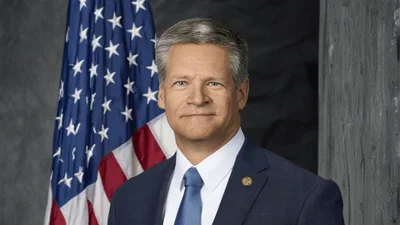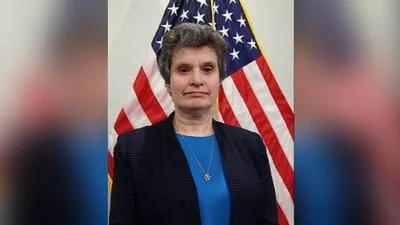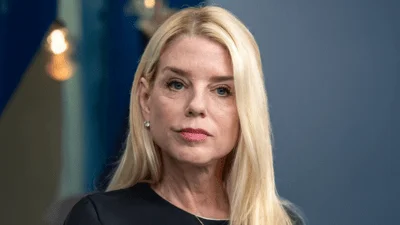It’s great to look out and see all of you and to celebrate you coming together today for this extraordinary summit.
Welcome to the Department of State. You just heard from one of our particularly best leaders here, and that’s Assistant Secretary Lu. He may not have started out as a social worker, but he’s one of the most humane, thoughtful, intellectually sharp, and collegial people I’ve ever worked with.
His leadership and the leadership his team is critical in deepening our partnerships with India’s government and people.
My thanks as well to Shelly Kapoor Collins, the Shatter Foundation – I love that name – and members of the U.S.-India Alliance for Women’s Economic Empowerment for bringing us together around a common cause: empowering women and girls to participate in India’s economy; spur its prosperity; enrich its society; and strengthen the bonds of friendship between our two nations.
Our belief in this vision of equality and equal opportunity is about more than rhetorical promises we will make to each other at this summit. It is an enduring commitment of our Administration.
It is at the top of the agenda in our diplomatic engagements in India, South and Central Asia, quite frankly, everywhere – in every meeting, call, ministerial session, or interaction around the world and in our own country.
I was in Cleveland, Ohio, [this week] to be at Case Western Reserve, to be at the City Club, and then to meet with the Ukrainian American community, and I called out the importance of women and girls in each of those as well.
It is a core priority for the leaders in this room and for our counterparts abroad – in the U.S. and Indian governments, in industry and business, in schools and civil society, in aid programs and academia.
For us here at the State Department, we have translated that priority into tangible results and made it an integrated part of our daily routine.
Assistant Secretary Lu mentioned I’m the first woman deputy. We’ve had women Secretaries of State, but never a deputy. It’s pathetic that it took us until 2021 to get there, so I urge India to move a little faster than we have.
Just last month, Secretary Blinken, alongside officials from the White House and USAID, rolled out the United States’ first-ever Strategy of Global Women’s Economic Security – a roadmap for investing in women entrepreneurs, women-owned businesses and start-ups, women and girls’ training and education.
Last week, the Secretary joined America’s mayors to highlight the importance of expanding inclusive opportunities for women- and minority-owned enterprises – because doing this work is essential to growth in our cities just like it is central for India and elsewhere.
These initiatives continue each day, in ways large and small. To give a few examples: We are implementing a project to build the capacity of women-owned businesses in India, Sri Lanka, Bangladesh, and Maldives.
We are advancing a program to make supply chains in the Indo-Pacific more diverse and resilient.
We are deploying our public diplomacy professionals to mentor women-led, early-stage ventures in India from an idea on the back of a napkin to a fully-functioning business.
We are helping equip female entrepreneurs, in India and South Asia, with the digital skills needed to compete in the 21st century. And we are supporting women disproportionately impacted by COVID-19.
The list goes on and on, and you’ll hear more about our programs and progress throughout this summit. But this should give you a little bit of a taste of how significant this issue is for the Secretary of State, our team, and our Department.
These efforts also reflect a fundamental fact – that women are critical for rapid and sustainable growth, in India and everywhere. Indeed, before the pandemic, one study estimated that gender parity could add $770 billion to India’s GDP by 2025.
Imagine that: $770 billion added to the GDP.
That would be the best possible investment anyone can make in the India of tomorrow – and many trailblazers on the ground and in this room are taking the reins of that work each day.
When I traveled to New Delhi back in the fall of 2021 – and our Under Secretary of Political Affairs is headed there this weekend; that hasn’t been announced publicly yet, so keep it to yourselves – I had a chance to sit down with remarkable representatives from the Self-Employed Women’s Association. What an extraordinary group.
This is the largest women’s organization in India, with a network of 50,000 women artisans across the country and a membership of 1.9 million that spans South Asia.
At the time, we were deep in the midst of the pandemic, and the women were having a pretty tough time. But in all the ways in which women have learned to be inventive, all their lives, they had, of course, made artisan masks – and taken some of their enterprises and turned them toward PPE for the pandemic.
This collection of leaders is focused on lifting women and girls out of poverty – a very ambitious and critical goal, a worthwhile mission, and an absolute necessity if India – and, frankly, the world – wishes to make its next chapter one of expansion, achievement, and success.
This kind of work could not be more critical – because no country, including the United States of America, can succeed when half its talent lacks resources, access, and opportunity.
But every market will be better off, every nation will be more stable, every region will be more secure when the entire population sees the doors of possibility swing wide open for women, for girls, for everyone.
That must remain our vision and our purpose, in the U.S. and India, in the public and private sectors, at this summit and every single day of our lives. Because we know that when women succeed, inclusiveness increases and discrimination declines. When women thrive, communities are stronger and economies are more resilient. When women lead, our planet is more prosperous, our people are safer, and our future looks brighter than ever before.
So I’m really here today more than anything to thank you for being part of this cause, for India, the United States, for our friendship and our partnership, and most of all, for women and girls worldwide. I hope you enjoy the rest of this summit, and I look forward to hearing the results of your terrific work.
Original source can be found here.









